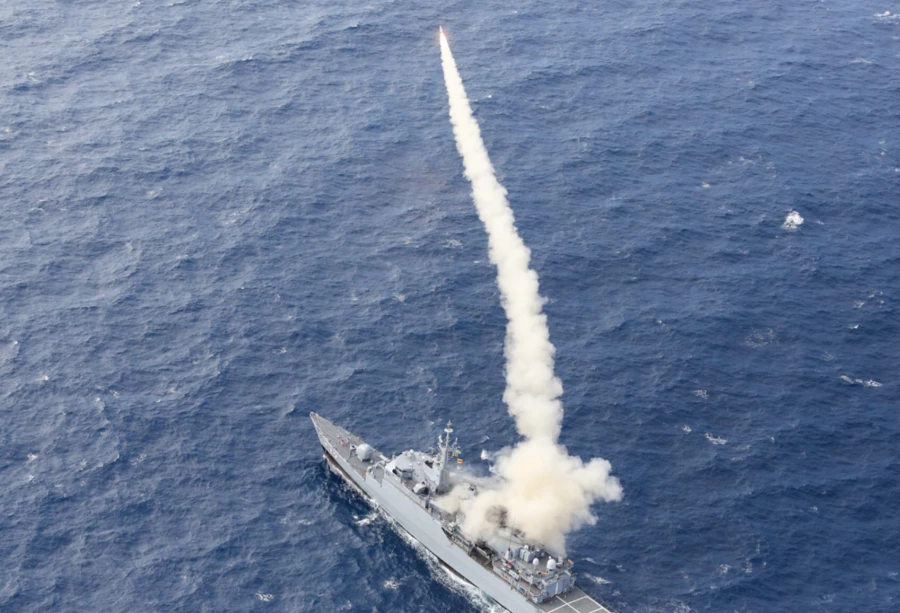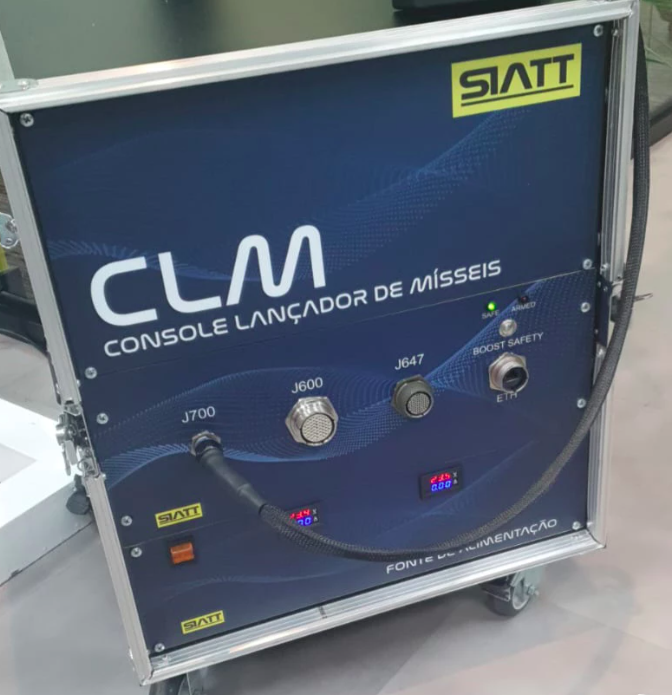By Roberto Caiafa
The Brazilian Navy (MB) and the strategic defense company Sistemas Integrados de Alto Teor Tecnológico (Siatt) successfully launched the fifth National Anti-Ship Surface Missile (Mansup) in the region south of Cabo Frio (RJ) on the morning of April 26.
The firing operation was carried out by the Liberal and União frigates and two AH-11B Wild Lynx.
The program aims to develop and produce this weapon with 100% national technology in Brazil.

Currently, the Mansup is in the production phase of a pilot batch for the functional qualification of the missile in flight.
In this phase, the launches use an inert telemetric warhead, which replaces the combat warhead in the test launches.
Its function is to transmit information from the missile during the flight to analyze and verify failures.
This last launch was the first flight of the updated versions of the guidance computer and altimeter, a subsystem of the Mansup with the function of estimating the height concerning the mean sea surface.
This test also included scheduled maneuvers to verify the operation of this new equipment’s Guidance, Navigation, and Control System (GNCS).
According to the head of the Mansup program at Siatt, Robson Duarte, many lessons have been learned since the first launch until today.
“Siatt developed the Guidance, Navigation and Control System with critical components, such as the altimeter, actuators, guidance computer, and inertial platform provided by the Brazilian Navy, which brings great autonomy to the country,” he said.
Robson also highlighted the importance for Brazil to manufacture these missiles and the role of Siatt in this manufacturing.
“This project will provide Brazil with total autonomy and independence for the production of this system, essential for the protection of the Blue Amazon, one of the greatest and potential natural wealth of the country, being a source of income, subsistence, direct and indirect jobs for the Brazilian nation, which must be preserved and protected,” he said.
For the director of Weapons Systems of the Navy, vice admiral Marco Antonio Ismael Trovão de Oliveira, “the application of new knowledge, with visible practical results, can be said to be exactly the objective of this stage of missile subsystems qualification.”
During the launch of the first Mansup qualification model, called ‘P1’, a new version of the Management, Navigation and Control System (SGNC) software developed for that stage was tested.
The final version of the CNMS was tested, with the improvements resulting from the analysis of the telemetry data of the ‘P1’ and the propulsion system developed for this stage.
Thus, it is expected that “with the analyzed data from this launch, this section of the missile will be approved in qualification as a product,” he explains.
The project is also important for Brazilian society as a factor generating jobs and for the knowledge acquired and put into practice, giving Brazil autonomy in producing this important sector of the Defense Industrial Base.
“The specialized workforce employed by the companies involved in the project is composed of Brazilian engineers and technicians trained in various academic centers in technology-related knowledge.”
“Therefore, the technology used in the Mansup project is 100% national, developed by Brazilians trained in our schools,” the admiral said.
For the launches of this stage, the updates will be implemented gradually to allow each subsystem to be individually evaluated and qualified for the final version of the product.
This second launch verified the performance of the propulsion system and evaluated the new version of the Missile Launch Console – CLM and the control software (SGNC), which underwent improvements based on the results of the previous launch.
In addition to the Liberal frigate, which was the launching vessel, the following also participated in the operation:
- the União frigate as an auxiliary vessel;
- the AH-11B aircraft (Lynx 45), responsible for telemetry (technology that allows remote and real-time measurement of the parameters necessary to evaluate the operation and performance of the missile);
- and the AH-11B aircraft (Lynx 43) to ensure the surveillance and security of the site.

With information from Infodefensa

